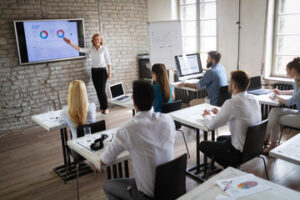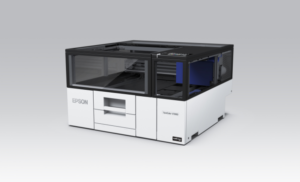Pests can damage plants, structures, and products. Routine pest control prevents this damage and protects health, safety, and property values.
Preventive nonchemical methods include sanitation, removing food and water sources, closing off hiding places, and growing resistant varieties of plants. Biological controls such as beneficial nematodes (like the roach-eating Steinernema carpocapsae) can also be effective. Contact South Shore IPM now!

The best way to deal with pests is to prevent them from coming in in the first place. Prevention involves routine maintenance and inspections to identify potential problem areas and take steps to correct them before the pests become an issue. This can include caulking openings, removing clogged gutters, and eliminating sources of food, water and shelter for pests. It also means keeping garbage bins tightly covered and removing them regularly, as well as making sure that there are no open drains in the landscape where standing water can develop.
It’s important to recognize the early signs of a pest problem, such as spider webs, rust-colored stains on mattresses and shed skins, and wasps flying around a home or business. These are often easy to spot with regular inspections, and can be addressed using non-chemical methods before the pest problem gets out of hand.
Once pests are established, it becomes more difficult to eliminate them. Suppression is the process of reducing the population to an acceptable level, causing less damage than would be caused by allowing the pest to continue growing. Suppression may be accomplished through traps and baits, as well as physical control methods such as sweeping, dusting or spraying with a targeted application.
When it comes to controlling pests, everyone has a role to play. Building residents should keep living spaces clean and report building maintenance problems to managers or owners. They should also remove food, cooking utensils and personal items from rooms where pesticides are being used. They should also close doors and windows when pesticides are being applied, and keep pets and children away from treated areas until they’re dry.
Pesticides are powerful chemicals that can cause injury or illness if used improperly. They should only be used by trained professionals, and they must be stored and disposed of safely. It’s also important to follow all instructions on the pesticide label. For example, some products can cling to clothes or carpets and can pose health risks if they’re inhaled or ingested. See Pest Management Tips for Building Residents (PDF) for more information about controlling pests safely.
Suppression
Once pests have been identified, the goal is to reduce their numbers or damage to an acceptable level using a combination of physical, biological and chemical methods that cause as little harm as possible to humans and the environment. Threshold-based decision making involves scouting and monitoring pest populations so that control measures are taken only when the pests reach an unacceptable threshold.
The first step is to physically remove or deter pests from the area, such as spraying insecticides around door frames and windows, or putting sticky traps out on window sills to catch rodents. Physical methods include removing or repairing clogged gutters and drainpipes, caulking cracks and crevices, sealing vents, repairing leaking pipes and removing wood piles or stacks of firewood where pests might hide.
Biological pest control involves conserving or releasing natural enemies of the pest, such as predators or parasites. These organisms are often bought or bred in laboratory settings and then released into the environment where they can be effective in suppressing the pest population. For example, the introduction of nematodes that kill harmful soil grubs can help to control greenhouse whitefly populations without damaging beneficial bees that pollinate the crops.
Another way to control pests is by providing alternative food and shelter sources. For example, planting plants such as zinnias that attract and then “trap” Japanese beetles can be an effective method of controlling the pest without using any chemicals.
In addition to introducing or enhancing the use of natural enemies, crop rotation, low-impact tillage and temporal planting and harvesting practices can all help to reduce the need for more drastic measures such as chemical treatments.
Lastly, some pests can be controlled by eradication, the complete removal or destruction of the population in the area being affected. This is the approach taken in some environments such as food establishments where there are strict governmental regulations regarding pest presence and tolerance levels. It is also the approach taken when pests have reached a critical threshold where their presence poses significant human health or environmental problems, such as vermin in residential buildings or insects in citrus groves.
Eradication
Pests such as rodents, cockroaches, termites and bed bugs cause health problems as well as damage to property. A variety of methods can be used to manage and eliminate these pests, including baits, traps and spraying. Pest control companies can help you choose the best option for your situation. They will begin by conducting an initial inspection to determine the extent of your pest problem and identify entry points, nesting areas and other signs of infestation. A customized treatment plan will then be developed to target specific pests and their sources. This may include both interior and exterior treatments, depending on the type of pest and the severity of the infestation.
Eradication is a rare goal in outdoor pest situations, where prevention and suppression are usually the main objectives. It is more common in enclosed environments such as homes, schools and office buildings, and health care, food processing or food preparation facilities. Eradication programs for Mediterranean fruit fly, gypsy moth and fire ants are examples of such initiatives.
Many eradication efforts have failed. The costs and benefits of eradicating a pest must be weighed against other considerations. For example, eradicating a disease could leave people vulnerable to re-infection from an unforeseen reservoir or vaccine strain reversion (as is the case with Guinea worm and polio). Political problems and civil strife might prevent an eradication effort from being carried out in critical areas where it is needed (as has happened in some cases of yellow fever).
Chemical pest control includes a wide range of products, from liquids and gels to aerosols. These can be used as a last resort when preventive measures fail. In general, chemicals should be used by trained and licensed professionals to minimize risks to human health and the environment. Before using any pest control product, it’s important to read the label carefully. It will contain detailed instructions on how to use the product and any hazards that it might pose.
Preventive pest control methods include routine cleaning, sealing cracks and crevices, and removing food sources. Keeping garbage and compost bins tightly closed can also deter pests. In addition, it’s a good idea to remove wood piles from the yard and to store firewood away from the house. Lastly, avoiding overly lush garden plants that provide shelter for pests can be beneficial.
Monitoring
Regular monitoring is the foundation of all IPM programs, regardless of the control strategies chosen. It involves searching for pests and assessing how many are present, what they are eating, and what damage they have caused. Identifying the pest correctly is the first step in determining whether the pest should be controlled and, if so, how. This information is used to select the most appropriate management tactics and to monitor their effectiveness.
In residential settings, routine pest monitoring helps preserve property values by preventing the loss of food, clothing, and furnishings to rodents, and it contributes to the safety of family members from disease-causing pathogens and allergens. It also helps reduce the occurrence of health problems that can be associated with pests, including asthma and allergies.
A key to effective monitoring is to use multiple methods, and to do so consistently. Some pests may respond differently to various methods, so a combination of approaches is often necessary to achieve complete control. In addition, some pests may only be active at certain times of the year, so it is important to monitor at different times of the day or year.
Pests in commercial greenhouses can be monitored using a variety of techniques, from visual observation to the use of sticky traps. The type of monitoring method selected will depend on the potential pest complex that is under consideration. For example, aphids and some mites can be monitored by counting the number of them that are on a leaf or stem. The same method can be used for spider mites and some psyllids.
Other pests are more difficult to monitor. These pests include some vertebrates (rodents, birds, fish, snakes) and invertebrates (insects, nematodes, fungus). In many cases, these species can be detected by visual observation and the presence of symptoms such as feeding, droppings or damaged leaves.
In buildings, monitoring for pests requires a comprehensive program that includes preventive maintenance and the installation of non-chemical trapping devices in areas of high risk. This includes regularly inspecting doors that are not normally used, sealing gaps and cracks with caulking and installing weather stripping. In addition, it is important to make sure that water and heat sources are located away from building openings, and to install non-chemical trapping devices in rooms with high humidity.








